Welcome to a fascinating exploration of Capybara Facts For Kids! These gentle giants of the rodent world are not only the largest rodents globally but also have some incredible features that make them truly unique creatures. From their exceptional swimming abilities and social nature to their herbivorous diet and cute whistling communication, there is so much to learn about these captivating animals. Get ready to dive into the world of capybaras and discover why they are such beloved creatures, especially among the younger audience. Join us on this educational journey as we uncover the interesting facts and behaviors of capybaras that make them a truly remarkable species in the animal kingdom. Let’s embark on this exciting adventure together and delve into the world of these fascinating semi-aquatic mammals!
Capybara Facts For Kids
1. Capybaras are the Largest Rodents in the World

For younger kids: Capybaras are big rodents that love to swim and sunbathe!
For older kids: Capybaras are the largest rodents globally, weighing up to 150 pounds and measuring over four feet long. They are semi-aquatic mammals found in South America.
Detailed explanation:Capybaras, known as the largest rodents in the world, are fascinating creatures that captivate the interest of both children and adults alike. Their unique characteristics make them an intriguing subject for learning, especially for kids who are curious about animals and nature.
One of the most captivating Capybara Facts For Kids is their impressive size. These animals can grow to be as large as four feet tall and weigh up to 150 pounds, making them the largest rodents on the planet. Their size alone is enough to make them stand out in the animal kingdom, and kids are often amazed by just how big these animals can get.
In addition to their size, capybaras are also known for their social behavior. They are highly social animals that live in groups known as herds, which can consist of anywhere from 10 to 100 individuals. Within these herds, capybaras exhibit complex social behaviors, such as grooming each other, communicating through vocalizations, and working together to care for their young.
Another interesting Capybara Fact For Kids is their unique habitat. Capybaras are native to South America, where they can be found in a variety of habitats such as swamps, rivers, and lakes. They are excellent swimmers and spend a significant amount of time in the water, using it as a way to escape predators and regulate their body temperature.
Overall, capybaras are truly remarkable animals that offer a wealth of educational opportunities for kids to learn about biology, ecology, and animal behavior. By sharing these Capybara Facts For Kids, children can develop a greater appreciation for the natural world and the diverse array of species that inhabit it.
Capybara Facts For Kids
2. Capybaras are Highly Social Animals

For younger kids: Capybaras love to be together with their friends and family!
For older kids: Capybaras are incredibly social creatures, living in groups of 10-20 individuals. They communicate through vocalizations and grooming to maintain strong social bonds.
Detailed explanation:Capybara Facts For Kids: Capybaras are highly social animals, known for their strong bonds with other members of their group. These unique rodents are native to South America and live in large groups, called herds, which can consist of up to 100 individuals.
One of the most interesting behaviors of capybaras is their strong social structure within these herds. They are known to communicate through various vocalizations, body language, and even scent-marking. This social behavior is crucial for their survival, as it helps them protect each other from predators and also ensures successful reproduction within the group.
Capybaras also engage in mutual grooming, which not only helps them maintain good hygiene but also strengthens the bond between members of the herd. They are often seen lying close to each other, touching and even sleeping in piles, showcasing their strong social connections.
Furthermore, capybaras have been known to adopt orphaned or abandoned young, showing a high level of empathy and care within their social groups. This behavior highlights their complex social dynamics and the importance of cooperation for their survival in the wild.
In conclusion, capybaras are fascinating creatures that exhibit highly social behavior within their herds. Their strong bonds, communication skills, and cooperative nature make them one of the most unique and interesting animals in the animal kingdom.
Capybara Facts For Kids
3. Capybaras are Excellent Swimmers
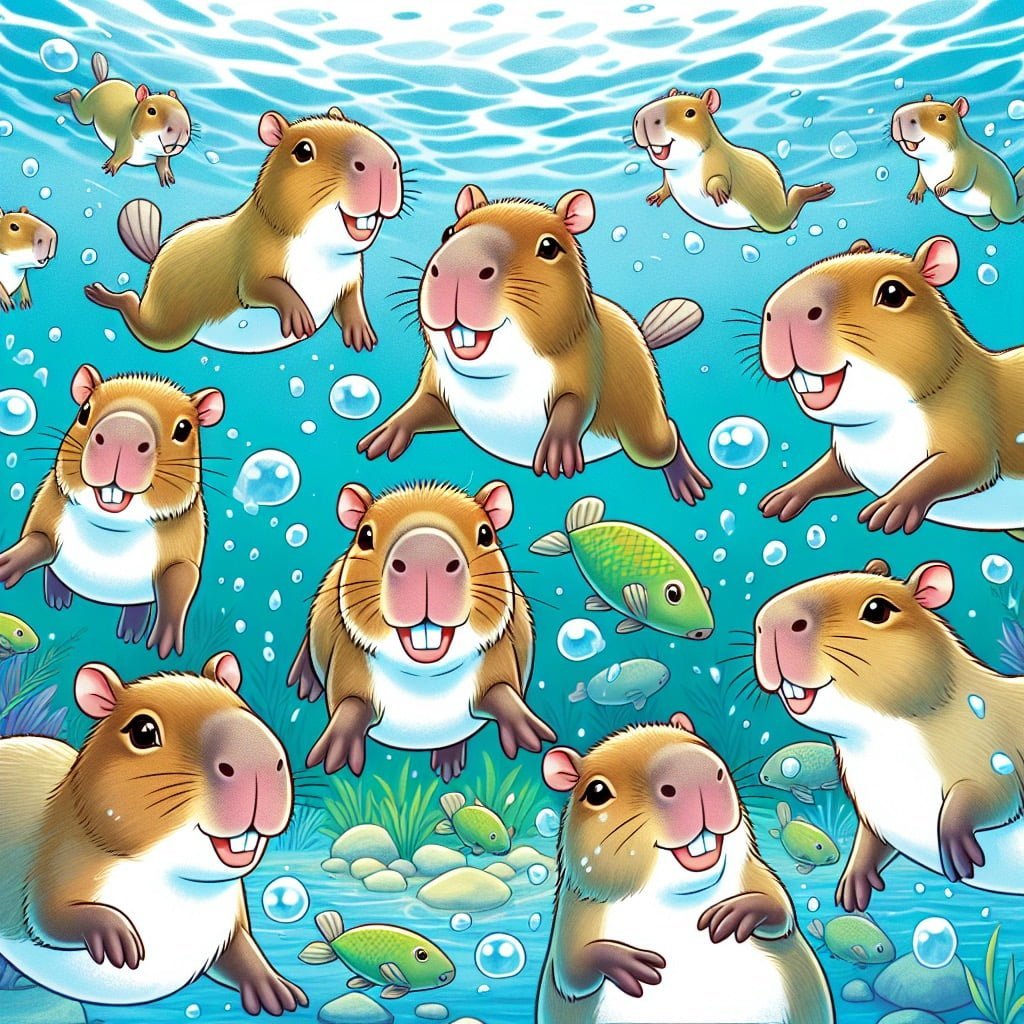
For younger kids: Capybaras are great swimmers and love to play in the water!
For older kids: Capybaras are superb swimmers and can remain submerged for up to five minutes. Their webbed feet and streamlined bodies help them navigate through water with ease.
Detailed explanation:Capybara Facts For Kids: Capybaras, the largest rodents in the world, are well known for their exceptional swimming abilities. These semi-aquatic mammals are perfectly adapted to life in and around the water, making them excellent swimmers.
One of the key adaptations that allows capybaras to excel in the water is their webbed feet. These large, partially webbed feet serve as paddles, enabling capybaras to move efficiently through the water. Additionally, their streamlined bodies and powerful limbs help them navigate through the water with ease.
Capybaras are often found in areas with easy access to water, such as rivers, lakes, and wetlands. They are known to spend a significant amount of time in the water, where they can swim gracefully and dive effortlessly to avoid predators or to forage for aquatic plants.
Aside from being great swimmers, capybaras also have a unique adaptation that allows them to stay submerged for several minutes at a time. They have special valves in their noses that close while underwater, preventing water from entering their nasal passages. This adaptation enables capybaras to remain submerged while they feed on aquatic vegetation or evade danger.
In conclusion, capybaras are truly remarkable swimmers, thanks to their webbed feet, streamlined bodies, and specialized nasal adaptations. These unique characteristics make them well-suited for their semi-aquatic lifestyle and allow them to thrive in their watery habitats. Kids who are fascinated by animals and nature will surely find the swimming abilities of capybaras both interesting and impressive.
Capybara Facts For Kids
4. Capybaras Have Webbed Feet
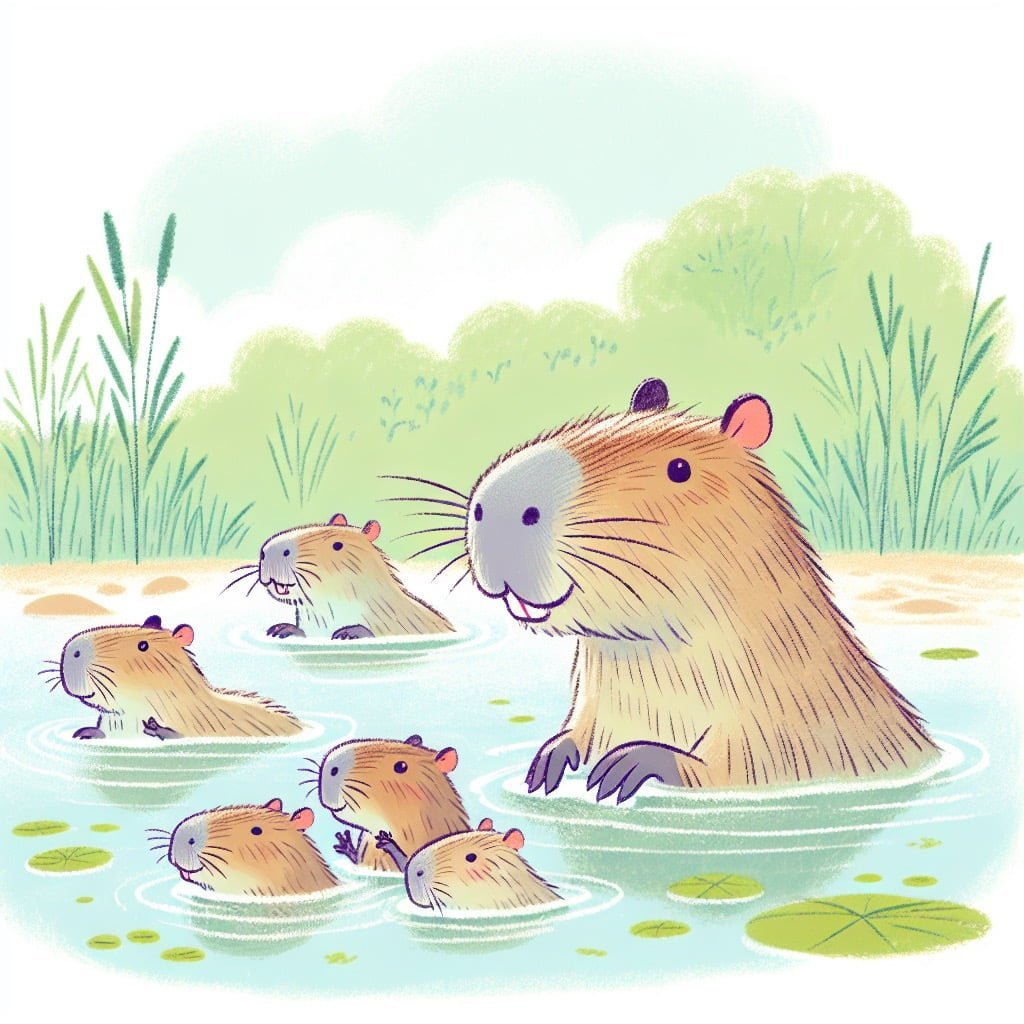
For younger kids: Capybaras have special feet that make them good swimmers!
For older kids: Capybaras possess partially webbed feet, which aid in swimming by providing better propulsion and steering in the water, allowing them to move effortlessly.
Detailed explanation:Capybaras are large, herbivorous rodents that are native to South America. One interesting fact about capybaras that captivates the curiosity of children is that they have webbed feet. These webbed feet are a unique adaptation that helps capybaras navigate through their semi-aquatic habitats.
Capybaras are excellent swimmers and spend a significant amount of time in the water. Their webbed feet act like paddles, allowing them to move efficiently through the water. This adaptation also helps them in marshy areas where they can easily traverse through mud and wetlands.
Having webbed feet is not only essential for capybaras to move through water, but it also aids in their survival. Capybaras are social animals that live in groups, and having webbed feet allows them to stay together as a group when moving through water bodies. This social behavior is crucial for their safety and protection against predators.
In addition to their webbed feet, capybaras also have dense, waterproof fur that helps them stay buoyant in the water. This combination of adaptations makes capybaras well-suited for their aquatic lifestyle.
Overall, the webbed feet of capybaras are a fascinating aspect of their biology that showcases the incredible adaptations of animals to their environment. Learning about these adaptations can spark curiosity and interest in the natural world among children, making capybara facts for kids an engaging topic for exploration and learning.
Capybara Facts For Kids
5. Capybaras are Herbivores

For younger kids: Capybaras only eat plants and grass—they are vegetarians!
For older kids: Capybaras have herbivorous diets, mainly consisting of grasses, aquatic plants, and fruits. Their digestive system is adapted to digesting tough vegetation.
Detailed explanation:Capybaras, the largest rodents in the world, are fascinating creatures that are native to South America. One important aspect of their diet is that they are herbivores, meaning that they primarily consume plant material. This characteristic plays a crucial role in their ecosystem as they help control vegetation growth by grazing on various types of vegetation such as aquatic plants, grasses, and fruits.
Capybaras have specialized teeth, known as molars, that are perfectly suited for grinding down plant material. Their digestive system is also adapted to break down cellulose, a tough substance found in plants that many animals cannot digest. By consuming plants, capybaras not only obtain the nutrients they need to survive and thrive, but they also help in seed dispersal as they pass seeds through their digestive system and deposit them in different locations, aiding in plant regeneration.
Being herbivores also means that capybaras play a vital role in the food chain. They are preyed upon by various predators such as jaguars, anacondas, and caimans. By consuming plant material, capybaras provide a food source for these carnivores, helping to maintain a balanced ecosystem. Additionally, their grazing habits can also create habitats for other species by altering the vegetation structure in their environment.
In conclusion, the fact that capybaras are herbivores is not only a key aspect of their biology but also plays a crucial role in maintaining the health and diversity of their ecosystem. Kids fascinated by capybara facts for kids will find that understanding their herbivorous nature sheds light on the important role these animals play in their environment.
Capybara Facts For Kids
6. Capybaras Have Nictitating Membranes
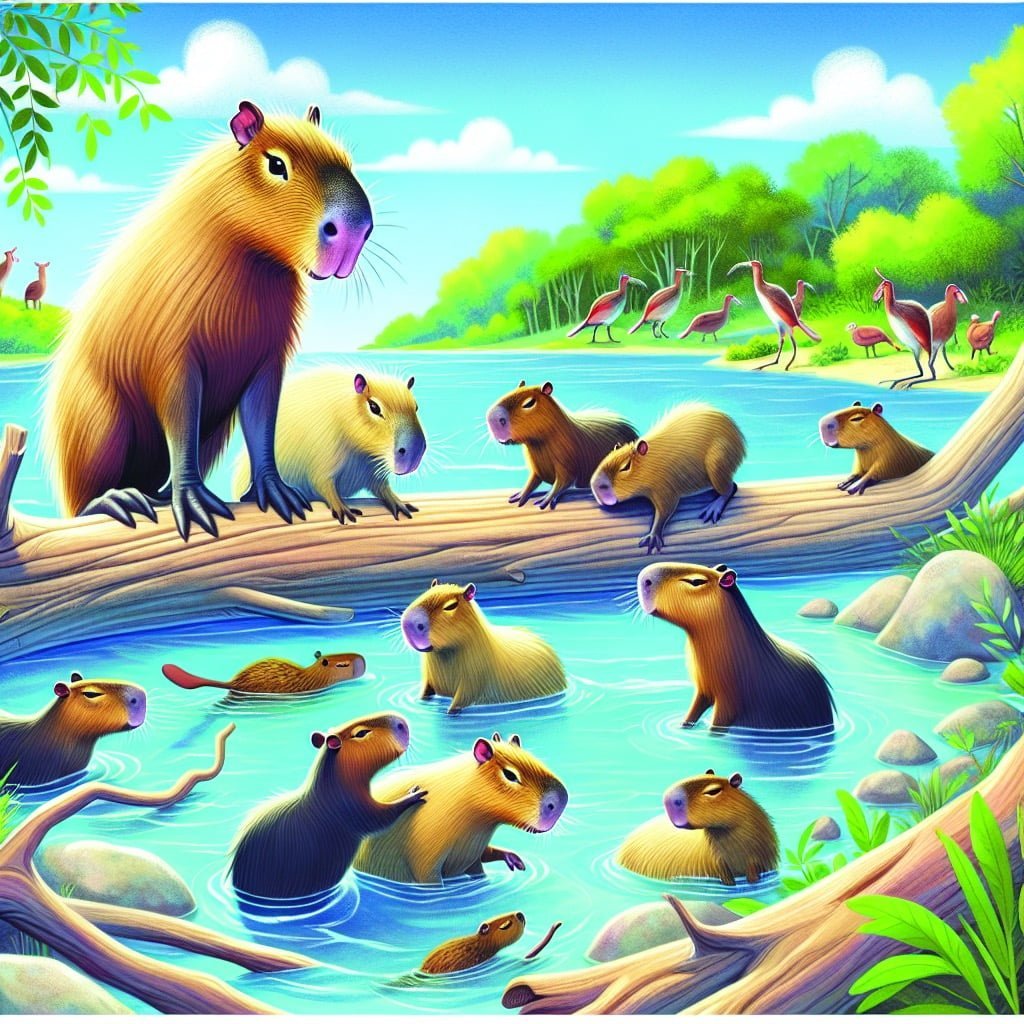
For younger kids: Capybaras have special eyelids that keep their eyes safe in water!
For older kids: Capybaras possess nictitating membranes, which are clear protective third eyelids that provide extra defense for their eyes while swimming or diving underwater.
Detailed explanation:Capybaras are fascinating creatures that are native to South America and are known for being the largest rodents in the world. One interesting fact about capybaras that many people may not know is that they have nictitating membranes.
Capybara Facts For Kids 6. Capybaras Have Nictitating Membranes
Nictitating membranes are essentially transparent or translucent third eyelids that are found in some animals, such as birds, reptiles, and, in this case, capybaras. These membranes can move horizontally across the eye, providing an additional layer of protection. In the case of capybaras, these nictitating membranes help protect their eyes from debris, water, and other potential hazards while they are swimming or even just navigating through dense vegetation in their semi-aquatic habitats.
The presence of nictitating membranes in capybaras is just one of the many amazing adaptations that these animals have developed to survive in their unique environment. By having this extra layer of eye protection, capybaras are able to thrive in a variety of habitats, from grassy savannas to dense rainforests.
In conclusion, the fact that capybaras have nictitating membranes is a testament to the incredible diversity and adaptability of the natural world. These membranes play a crucial role in protecting the eyes of capybaras and are just one of the many fascinating aspects of these remarkable animals.
Capybara Facts For Kids
7. Capybaras are Crepuscular Animals
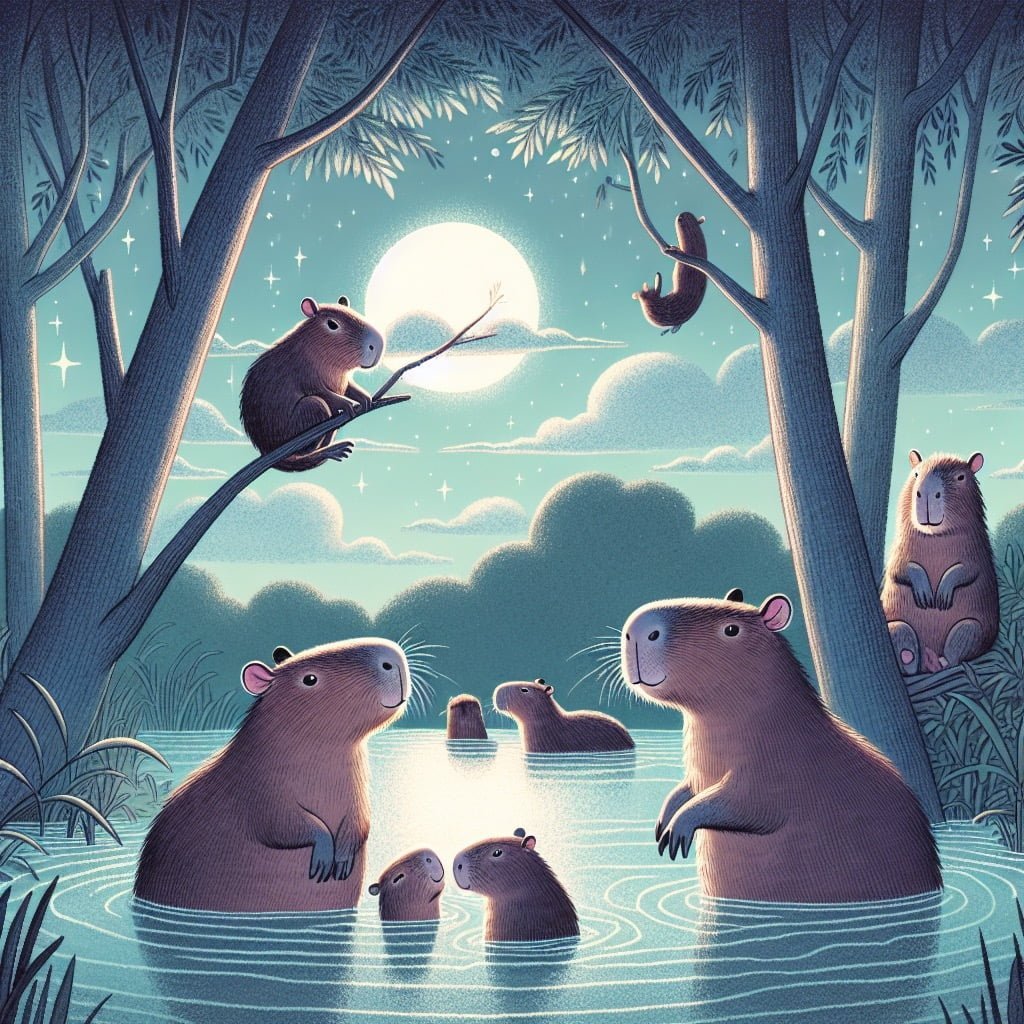
For younger kids: Capybaras are most active during the early morning and evening times!
For older kids: Capybaras are crepuscular animals, meaning they are most active during dawn and dusk. This behavior helps them avoid predators and regulate body temperature in hot climates.
Detailed explanation:Capybaras, the largest rodents in the world, are fascinating creatures that exhibit unique behaviors. One interesting fact about capybaras is that they are crepuscular animals. This means that they are most active during the twilight hours of dawn and dusk.
Capybaras are well-suited for crepuscular activity due to their adaptations. They have excellent senses of sight, smell, and hearing, which allows them to navigate their surroundings effectively during low light conditions. This behavior also helps them avoid predators that are more active during the day or night.
For Capybara Facts For Kids, it is important to highlight the significance of this crepuscular behavior in the lives of capybaras. By being active during the twilight hours, capybaras can take advantage of cooler temperatures and lower light levels to find food, socialize with other capybaras, and engage in activities such as grooming and swimming. This behavior is not only functional for capybaras but also fascinating for kids to learn about.
In conclusion, capybaras being crepuscular animals is an interesting aspect of their biology and behavior. By understanding this trait, kids can appreciate the unique adaptations that capybaras have developed to thrive in their environments. So, next time you see a capybara at a zoo or in the wild, remember that they are most likely to be active during the magical hours of dawn and dusk.
Capybara Facts For Kids
8. Capybaras Communicate with Whistles
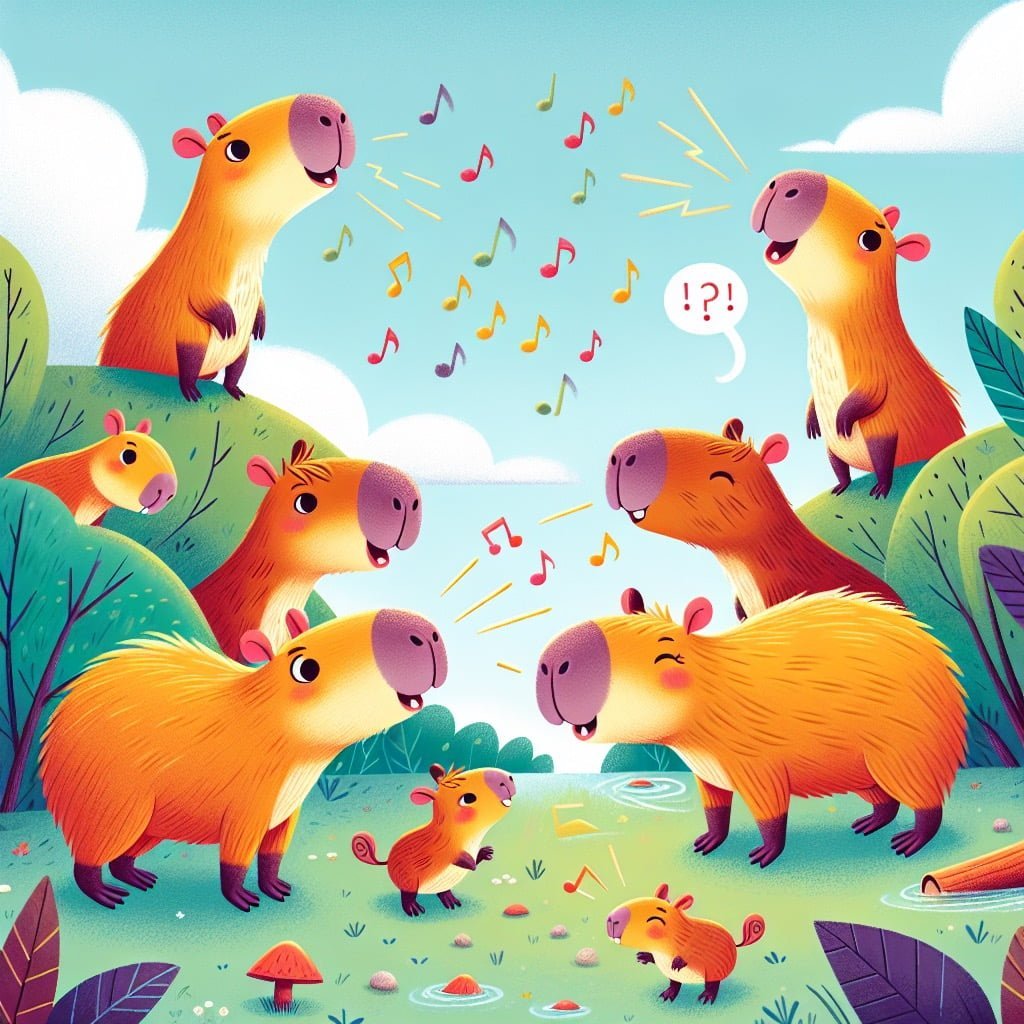
For younger kids: Capybaras talk to each other using cute whistling sounds!
For older kids: Capybaras communicate through a variety of vocalizations, including distinctive whistles. These sounds help them convey danger signals, locate group members, and maintain social connections.
Detailed explanation:Capybaras, the largest rodents in the world, are known for their unique way of communication through whistles. These social animals use a variety of vocalizations to express themselves, with whistling being one of the most common forms of communication. Capybaras are highly social creatures that live in groups, and they use their whistles to communicate with each other in various situations.
One of the main reasons capybaras whistle is to warn their group members of potential dangers. When they sense a predator nearby, such as a jaguar or a caiman, they will emit a series of high-pitched whistles to alert the rest of the group. This helps the capybaras to stay safe and avoid becoming prey themselves. In addition to warning calls, capybaras also use whistles to establish their territory and to communicate with their offspring.
Capybara whistles can vary in pitch, duration, and intensity, allowing them to convey different messages depending on the situation. By listening to the nuances of these whistles, capybaras can understand what their group members are trying to communicate, whether it is a warning of danger or a call for mating. Overall, whistling plays a crucial role in the social structure of capybara groups, helping them to stay connected and cooperate with each other.
In conclusion, capybaras’ ability to communicate through whistles is an important aspect of their social behavior. By using these vocalizations, capybaras are able to warn each other of dangers, establish territories, and maintain their close-knit social bonds. Their whistles are not just sounds, but a sophisticated form of communication that allows them to thrive in their natural habitats.
Capybara Facts For Kids
9. Capybaras are Preyed Upon by Jaguars and Anacondas
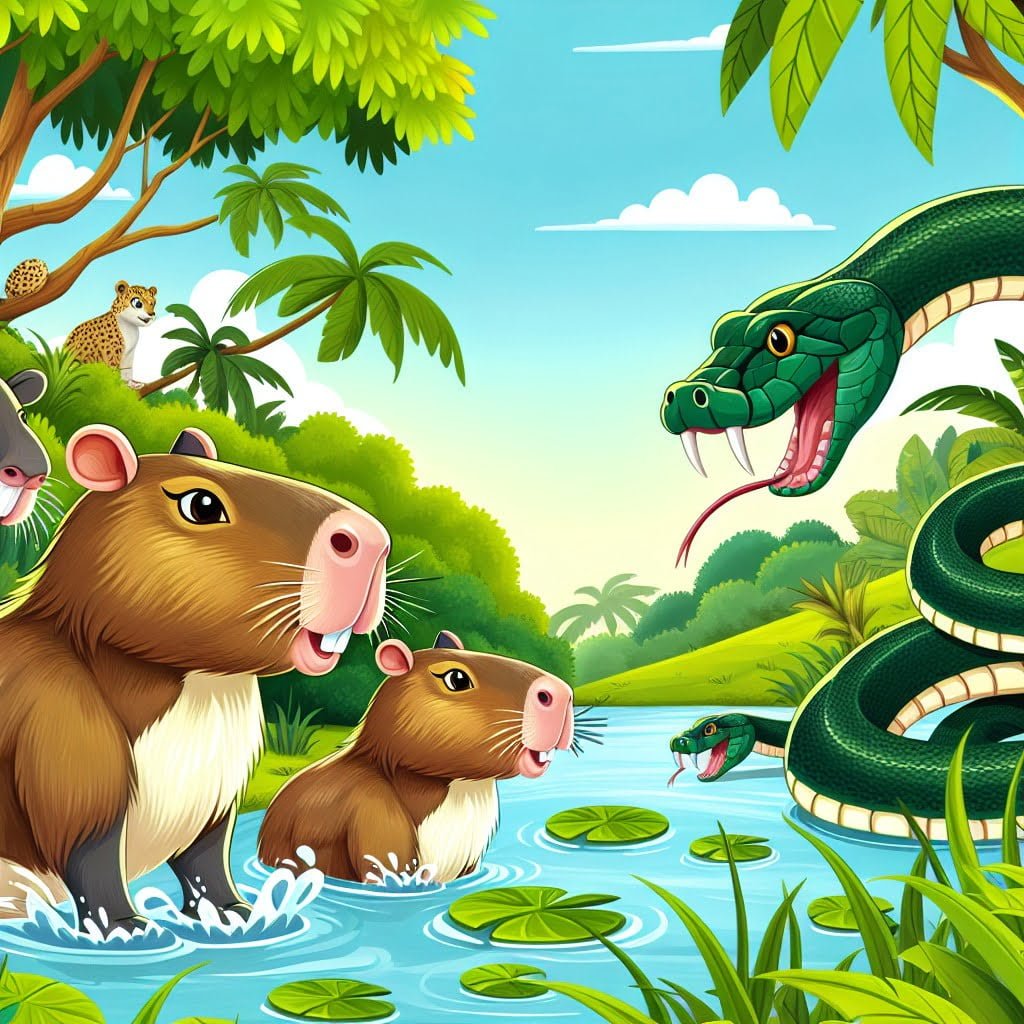
For younger kids: Capybaras have to watch out for big cats and huge snakes!
For older kids: Capybaras are hunted by predators such as jaguars and anacondas. They rely on their alertness, speed, and group living to avoid becoming a meal for these carnivorous animals.
Detailed explanation:Capybaras, which are the largest rodents in the world, are fascinating creatures that inhabit various parts of South America. Despite their relatively peaceful demeanor, capybaras are often targeted by predators such as jaguars and anacondas due to their large size and vulnerability. These two formidable predators pose significant threats to capybaras in their natural habitats.
Jaguars, known for their strength and stealth, are skilled hunters that prey on a variety of animals, including capybaras. With their powerful jaws and sharp claws, jaguars are capable of taking down even relatively large prey like capybaras. They often rely on their superior speed and agility to ambush their unsuspecting victims, making capybaras an enticing target for these apex predators.
In addition to jaguars, capybaras also have to contend with the threat of anacondas. These massive snakes, known for their impressive size and strength, are known to constrict their prey to death before consuming them whole. Capybaras, with their large bodies and relatively slow movement, are ideal prey for anacondas. Once an anaconda has successfully captured a capybara in its powerful coils, the outcome is usually grim for the unfortunate rodent.
Despite these natural predators, capybaras have adapted various strategies to survive in their challenging environment. They are highly social animals that live in groups, allowing them to watch out for danger collectively and increase their chances of survival. By staying vigilant and relying on their keen senses, capybaras can minimize the risks posed by predators like jaguars and anacondas in their quest for survival in the wild.
Capybara Facts For Kids
10. Capybaras Have a Lifespan of up to 10 Years

For younger kids: Capybaras can live for many years, just like your pet dog!
For older kids: Capybaras typically live for 8-10 years in the wild, although they can reach up to 12 years in captivity. Factors such as habitat threats and predation impact their lifespan in the wild.
Detailed explanation:Capybaras, the world’s largest rodents, are fascinating creatures that captivate the interest of children and adults alike. One of the most interesting Capybara Facts For Kids is that these herbivorous mammals have a lifespan of up to 10 years in the wild.
In their natural habitat of South America, Capybaras face various threats that can impact their lifespan. Predators such as jaguars, pumas, and anacondas pose a danger to these gentle animals, as do diseases and habitat destruction. However, capybaras are known for their adaptability and ability to thrive in a variety of environments, which can help them reach their maximum lifespan.
In order to protect Capybaras and ensure they live a full 10 years or more, conservation efforts are crucial. By preserving their natural habitats, enforcing regulations against hunting and poaching, and educating the public about these unique creatures, we can help safeguard the future of the Capybara population.
For children interested in learning more about Capybaras, it is important to emphasize the significance of respecting wildlife and the environment. By understanding the lifespan of Capybaras and the challenges they face, kids can develop a sense of empathy and appreciation for these remarkable animals. So, next time you come across a Capybara fact for kids, remember to spread awareness about these extraordinary creatures and their impressive 10-year lifespan.
Did you know?
Did you know that capybaras have been observed forming friendships with other animal species, such as ducks and even monkeys?
Summary of Capybara Facts For Kids
If you’re looking to learn more about fascinating and unique animals, then this blog post on Capybara facts is a must-read! Did you know that Capybaras are the largest rodents in the world, weighing up to 150 pounds and measuring over four feet long? These semi-aquatic mammals hailing from South America are not only impressive in size but also highly social animals, living in groups of 10-20 individuals and communicating through vocalizations and grooming. Plus, they have some cool adaptations like webbed feet for swimming and nictitating membranes to protect their eyes underwater. Discover more fun facts about these adorable creatures, from their herbivorous diets to their lifespan of up to 10 years. So, if you want to educate yourself or entertain your kids with some captivating Capybara trivia, this blog post is definitely worth a read!
Sources and additional information for Capybara Facts For Kids
WikipediaBritannicaSan Diego Zoo KidsThe Smithsonian InstitutionDK Find Out!Australian MuseumWorld Wildlife FundThe Nature ConservancyAnimal PlanetMonterey Bay AquariumPBS NatureSmithsonian’s National Zoo & Conservation Biology InstituteWorld Wildlife FundAnimal Diversity Web (University of Michigan)IUCN Red List of Threatened SpeciesThe Cornell Lab of Ornithology – All About BirdsNational Audubon SocietyEncyclopedia of LifeSeaWorld Parks & EntertainmentAustralian Museum – AnimalsEncyclopedia of Life




